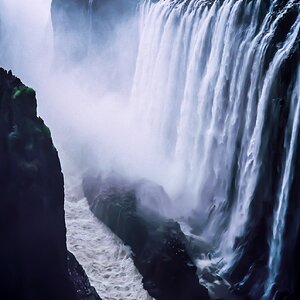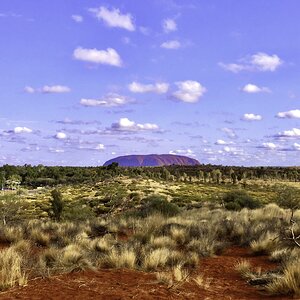Anybody got advice for shooting a longer exposure shot in daylight. Trying to get a blurred crowd downtown. I'd appreciate any advice or ideas. I don't want to do it in Photoshop. I'm using a D70 with tripod and remote.
Navigation
Install the app
How to install the app on iOS
Follow along with the video below to see how to install our site as a web app on your home screen.

Note: This feature currently requires accessing the site using the built-in Safari browser.
More options
You are using an out of date browser. It may not display this or other websites correctly.
You should upgrade or use an alternative browser.
You should upgrade or use an alternative browser.
Longer exposure in daylight
- Thread starter chroix
- Start date
Chase
I am now benign!
- Joined
- Mar 9, 2003
- Messages
- 7,808
- Reaction score
- 51
- Location
- Deep in the heart of Texas!
- Website
- www.thephotoforum.com
- Can others edit my Photos
- Photos OK to edit
Neutral density filters are all I can think of...
Hertz van Rental
We're supposed to post photos?
Lowest ISO setting you can manage and the largest f-number.
Add neutral density filters if necessary.
A dull, overcast day or even twilight will drop the exposure more.
Using film you'd be looking at ISO50 or even 25.
But it all depends upon how long an exposure you want.
Add neutral density filters if necessary.
A dull, overcast day or even twilight will drop the exposure more.
Using film you'd be looking at ISO50 or even 25.
But it all depends upon how long an exposure you want.
Soulreaver
TPF Noob!
Yep, if its too bright in the smallest aperture you can try lowering the iso.
Try not too shoot in bright light, perhaps late afternoon would be best.
I guess an exposure of 2,3 seconds should do.
Try not too shoot in bright light, perhaps late afternoon would be best.
I guess an exposure of 2,3 seconds should do.
SWFLA1
TPF Noob!
- Joined
- Aug 23, 2004
- Messages
- 241
- Reaction score
- 1
On a D70 ISO 200 is the lowest you can go, so in order to lengthen the exposure time you would need to use neutral density filter (or more than one if necessary) - it will not affect anything except exposure value. Do you already use a circular polarizer? If not, you should - it will also lengthen exposure - but it is not a neutral density, so it will affect the final image...
hope this helps
hope this helps
chroix
In Latin it's "spikius conius thingonius"
- Joined
- Feb 3, 2005
- Messages
- 208
- Reaction score
- 2
Thank you all for your responses. Lots of good suggestions. i may just shoot at at dusk. I think I want it to be pretty long after doing some test shots. When I get a chance I'll put up a test shot and illustrate what I'm going for. Thanks again.
Unimaxium
TPF Noob!
- Joined
- Nov 13, 2004
- Messages
- 2,689
- Reaction score
- 22
- Website
- www.flickr.com
- Can others edit my Photos
- Photos OK to edit
Sounds like a neat idea. I'd be interested to see how it comes out when you try it.
Rhubarb
TPF Noob!
- Joined
- Dec 16, 2004
- Messages
- 286
- Reaction score
- 1
- Location
- Roaming the globe
- Can others edit my Photos
- Photos OK to edit
^ Ditto!
Digital Matt
alter ego: Analog Matt
- Joined
- Jan 30, 2004
- Messages
- 5,358
- Reaction score
- 73
- Location
- Santa Barbara, CA
- Website
- www.mattperko.com
- Can others edit my Photos
- Photos NOT OK to edit
Unimaxium
TPF Noob!
- Joined
- Nov 13, 2004
- Messages
- 2,689
- Reaction score
- 22
- Website
- www.flickr.com
- Can others edit my Photos
- Photos OK to edit
Wow, a 9-stop ND filter... That should definitely let you get some good blurring.
airgunr
TPF Noob!
- Joined
- Mar 21, 2004
- Messages
- 846
- Reaction score
- 4
- Location
- Delavan, Wisconsin, USA
- Can others edit my Photos
- Photos OK to edit
I couldn't get the Adorama site to load so I'm not sure if it is the same thing but....
Singh-Ray has a variable Neutral Density filter that goes from 1 to 10 stops. Kind of expensive though. I think it runs around $300 or so.
Singh-Ray has a variable Neutral Density filter that goes from 1 to 10 stops. Kind of expensive though. I think it runs around $300 or so.
Digital Matt
alter ego: Analog Matt
- Joined
- Jan 30, 2004
- Messages
- 5,358
- Reaction score
- 73
- Location
- Santa Barbara, CA
- Website
- www.mattperko.com
- Can others edit my Photos
- Photos NOT OK to edit
The 72mm 9 stop Hoya ND is $111.95 @ Adorama. They also make a 17 stop one, which the only size Adorama has is the 39mm, and it's $39.95.
Kodan_Txips
TPF Noob!
- Joined
- Feb 6, 2005
- Messages
- 99
- Reaction score
- 0
What about the idea of using 2 stacked polarisers?
Surely as you rotate them nearer and nearer to 90 degrees to each other they will approach a neutral density rating of infinity?
This may be the cheapest solution in the long run. A polariser is always useful, I think it is a must have, and maybe you can borrow another from a pal?
Surely as you rotate them nearer and nearer to 90 degrees to each other they will approach a neutral density rating of infinity?
This may be the cheapest solution in the long run. A polariser is always useful, I think it is a must have, and maybe you can borrow another from a pal?
Chase
I am now benign!
- Joined
- Mar 9, 2003
- Messages
- 7,808
- Reaction score
- 51
- Location
- Deep in the heart of Texas!
- Website
- www.thephotoforum.com
- Can others edit my Photos
- Photos OK to edit
Now that is an interesting thought! I'm curious what other effect it may have on the image, but I'd like to see what the result would be.
Similar threads
- Replies
- 1
- Views
- 503
- Replies
- 5
- Views
- 401
- Replies
- 6
- Views
- 639



![[No title]](/data/xfmg/thumbnail/31/31013-b871f1d295c83b831c1423028e1ce5dc.jpg?1619734568)
![[No title]](/data/xfmg/thumbnail/36/36301-27972c0474532c2ef657014362950733.jpg?1619737495)
![[No title]](/data/xfmg/thumbnail/31/31014-6b1a572624824b852f5adaf3594767af.jpg?1619734569)






